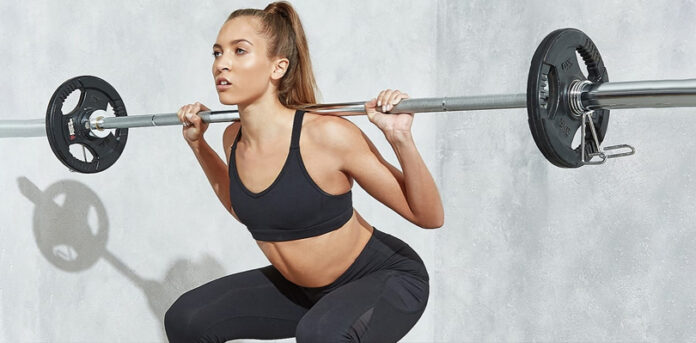Developing solid and well-defined glutes is not just about appearance; it’s a journey toward improving overall fitness, strength, and confidence. Whether you’re an aspiring athlete, a fitness enthusiast, or someone looking to transform your physique, a targeted strength training routine for your glutes can make a significant difference. The gluteal muscles, consisting of the gluteus maximus, medius, and minimus, play a critical role in various movements such as walking, running, squatting, and jumping. A robust set of glutes not only contributes to an attractive physique but also enhances athletic performance, posture, and lower body stability.
Strength Training Workout Routine For Glutes
Here is a sample workout routine that focuses on building glutes. This workout routine includes a variety of compound and isolation exercises that effectively target the gluteal muscles. Before starting the workout, warm up and cool down afterward. Adjust the weights and repetitions based on your fitness level, and gradually increase the intensity as you progress.
Warm-up (5-10 minutes)
- Jumping jacks
- Bodyweight squats
- Leg swings (side to side and front to back)
- Hip circles
- Dynamic lunges
Barbell Squats
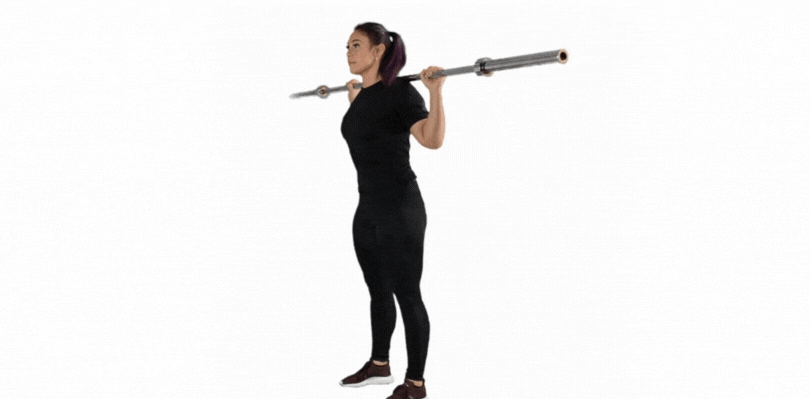
How to do it:
- Stand with your feet shoulder-width apart.
- Place a barbell on your upper back, resting it on your traps.
- Lower your body by bending your knees and hips as if you were going to sit back in a chair.
- Keep your chest up and back straight.
- Lower down until your thighs are parallel to the ground, then push through your heels to return to the starting position.
Reps: 4 sets of 8-10 reps
Benefits
- Targets the glutes, quadriceps, hamstrings, and lower back.
- Builds overall lower body strength and stability.
Romanian Deadlifts
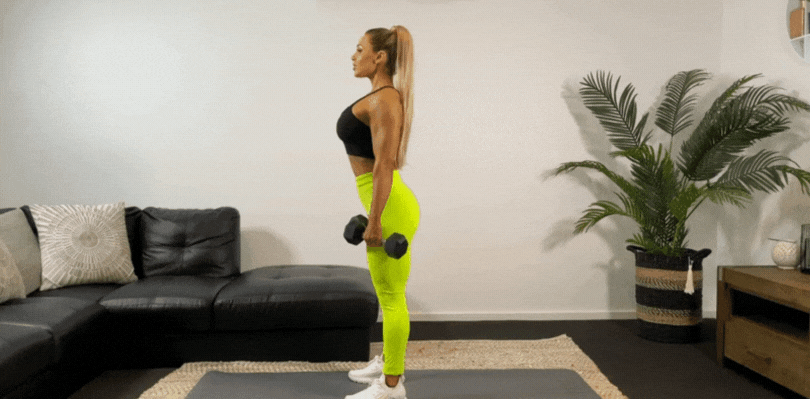
How to do it:
- Hold a barbell with an overhand grip, hands slightly wider than shoulder-width apart.
- Stand with your feet hip-width apart.
- Keeping your back straight, bend at your hips and lower the barbell toward the ground.
- Lower until you feel a stretch in your hamstrings, then return to the starting position by driving your hips forward.
Reps: 4 sets of 8-10 reps
Benefits:
- Focuses on the hamstrings and glutes.
- Improves hamstring flexibility and strengthens the posterior chain.
Hip Thrusts
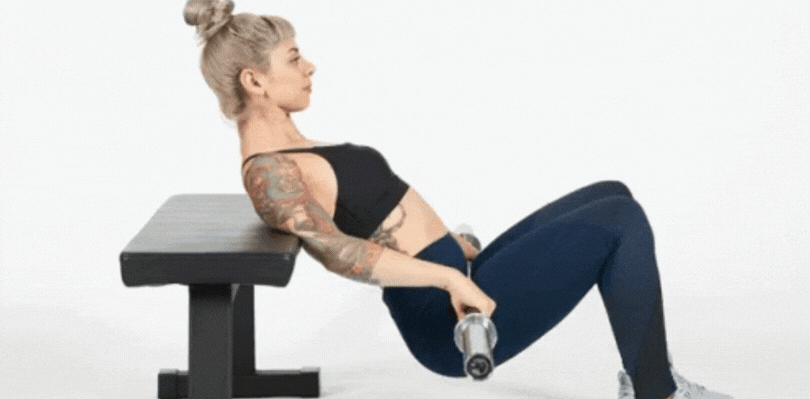
How to do it:
- Sit on the ground with your upper back against a bench.
- Roll a barbell over your hips and lean your shoulder blades against the bench.
- Plant your feet firmly on the ground, hip-width apart.
- Thrust your hips upward, creating a straight line from your shoulders to your knees.
- Squeeze your glutes at the top, then lower your hips back down.
Reps: 4 sets of 10-12 reps
Benefits
- Isolates and activates the glutes effectively.
- Builds gluteal strength and enhances glute size and shape.
Lunges (Walking or Stationary)
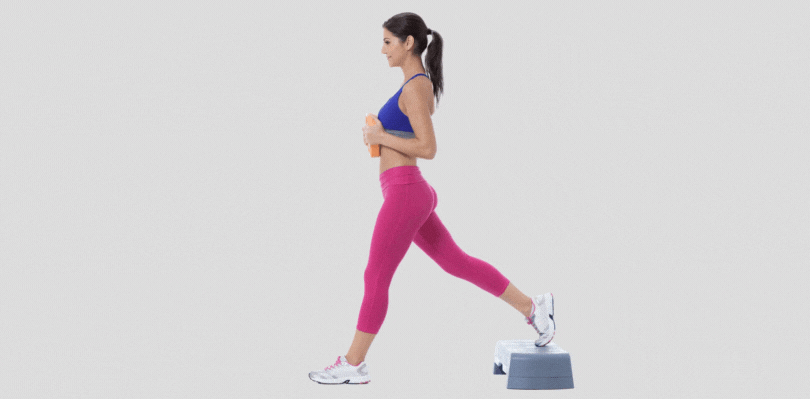
How to do it:
- Stand with your feet together.
- Take a step forward with your right foot and lower your body until your front thigh is parallel to the ground.
- Push off your right foot to return to the starting position.
- Alternate legs for walking lunges or repeat on the same leg for stationary lunges.
Reps: 3 sets of 12 reps per leg
Benefits:
- Works the glutes, quadriceps, and hamstrings.
- Improves lower body balance and stability.
Glute Bridges
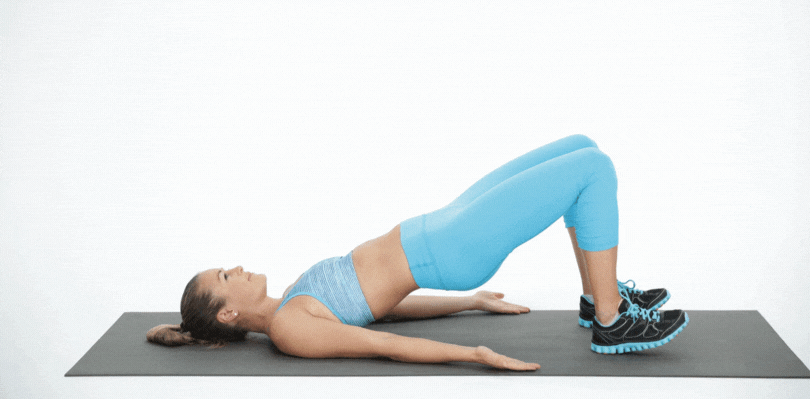
How to do it:
- Lie on your back with your knees bent and feet flat on the ground.
- Place your arms at your sides, palms facing down.
- Lift your hips toward the ceiling, squeezing your glutes at the top.
- Hold for a moment, then lower your hips back down without touching the ground.
Reps: 3 sets of 15 reps
Benefits:
- Isolates the glutes and strengthens the lower back.
- Enhances glute activation and improves hip thrusting power.
Cable Kickbacks
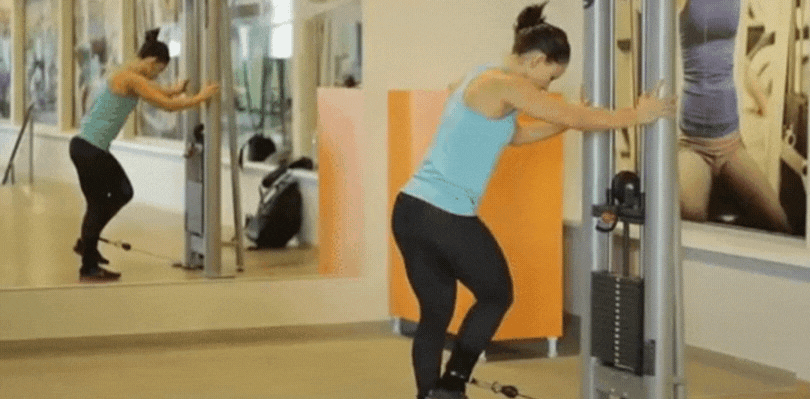
How to do it:
- Attach an ankle strap to a low cable pulley.
- Strap the ankle strap to one ankle and face the machine.
- Keeping your knee slightly bent, kick your leg back and up, squeezing your glutes at the top.
- Lower your leg back down slowly.
Reps: 3 sets of 15 reps per leg
Benefits:
- Isolates the glutes, particularly the gluteus maximus.
- Enhances muscle definition and gluteal aesthetics.
Tips
To get the best results while exercising consider the following tips:
- Focus on using the proper form for each exercise so that your glutes are maximally activated.
- Increase the weight gradually as you get stronger, but always prioritize maintaining correct form over lifting heavy weights. This will help you avoid injuries and ensure that you are targeting the right muscles.
- Make sure to engage your core muscles so that you can maintain stability during the exercises.
- For best results, try incorporating this routine 2-3 times per week, with at least one day of rest between each session.
- Finally, remember to listen to your body; if you experience any pain during an exercise (not to be confused with discomfort), stop immediately and consult a fitness professional for guidance.
FAQs
What is the best exercise for targeting glutes?
To target the glutes effectively, the hip thrust is the most recommended exercise. This workout isolates the glute muscles and allows for heavy weights to be used, promoting significant growth and strength. By incorporating hip thrusts into your workout routine, you can observe a noticeable improvement in gluteal development.
How often should I train my glutes each week?
It is generally advised to train your glutes 2 to 3 times per week for optimal results. This frequency allows for proper recovery while providing enough stimulus for muscle growth. However, the training frequency can vary based on individual fitness levels, recovery abilities, and workout intensity. It’s important to listen to your body and adjust your training accordingly.
Can I build glutes without using weights or gym equipment?
Yes, it is possible to build your glutes without weights or gym equipment. Bodyweight exercises like squats, lunges, glute bridges, and various forms of leg lifts can be highly effective in building gluteal muscles. Additionally, resistance bands can add intensity to these exercises. Irrespective of whether you’re using weights or relying on bodyweight exercises, consistency and proper form are key.

